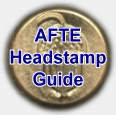|
0 Members and 1 Guest are viewing this topic. |
Indianapolis-Marion County Forensic Services Agency - Firearms Examiner opening by Richard Amberger
[Yesterday at 03:45:01 PM] Re: AFTE 2025! Book your hotel now! by Jessica Winn [November 19, 2024, 10:14:20 AM] Re: AFTE 2025! Book your hotel now! by Jennifer Floyd [November 19, 2024, 09:33:25 AM] MOVED: Comparing a bullet jacket to two bullet cores by Jessica Winn [November 18, 2024, 06:27:13 PM] Booking your Flight?! by Jessica Winn [November 18, 2024, 02:45:54 PM] Re: Noblis/NIST Forensic Bullet Examination Black Box Study Published by Robert Thompson [November 14, 2024, 01:41:08 PM] Noblis/NIST Forensic Bullet Examination Black Box Study Published by Alan Zheng [November 14, 2024, 10:48:39 AM] |










 Guests: 329
Guests: 329 Hidden: 0
Hidden: 0 Users: 21
Users: 21
 Total Members:
Total Members: 
